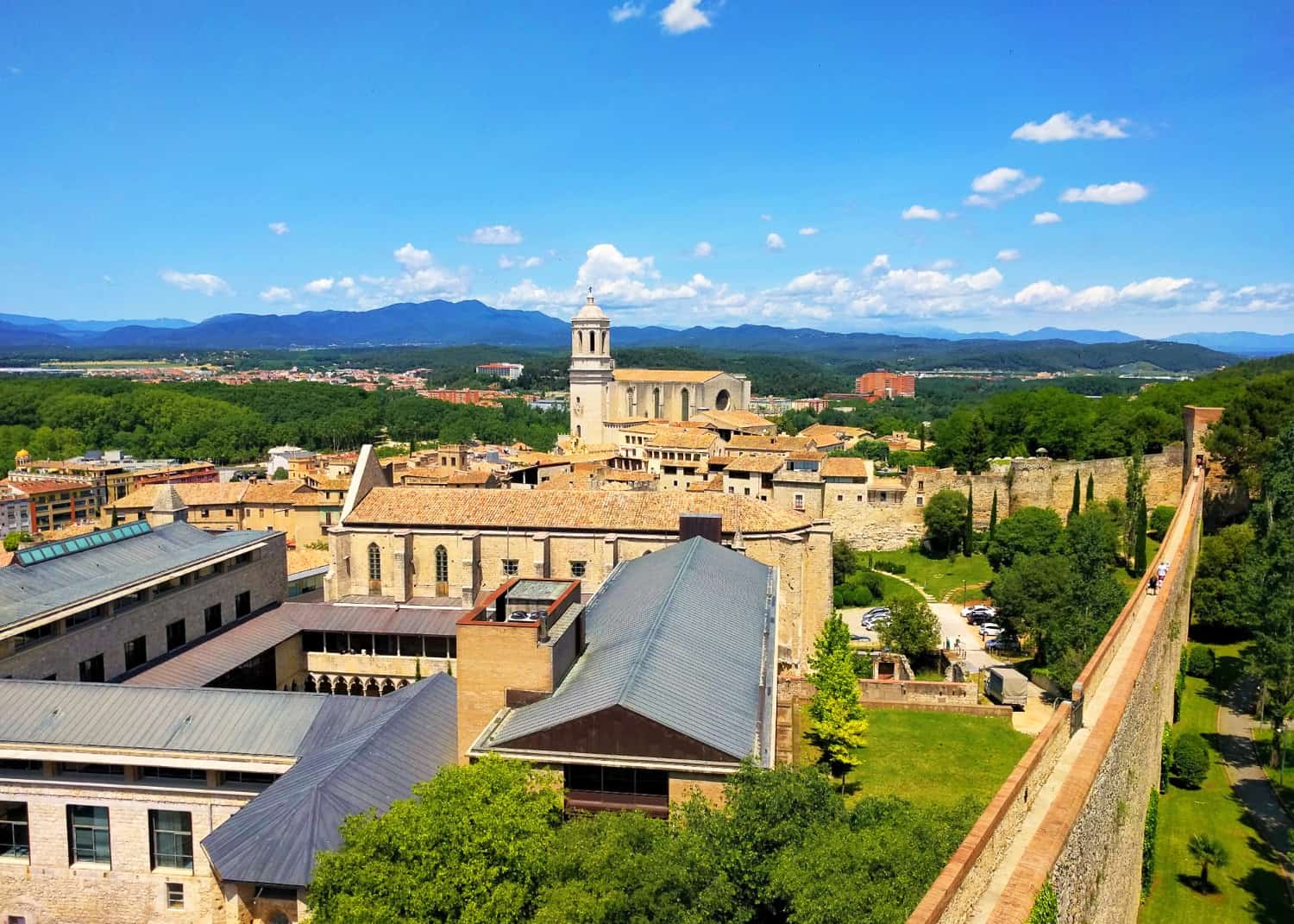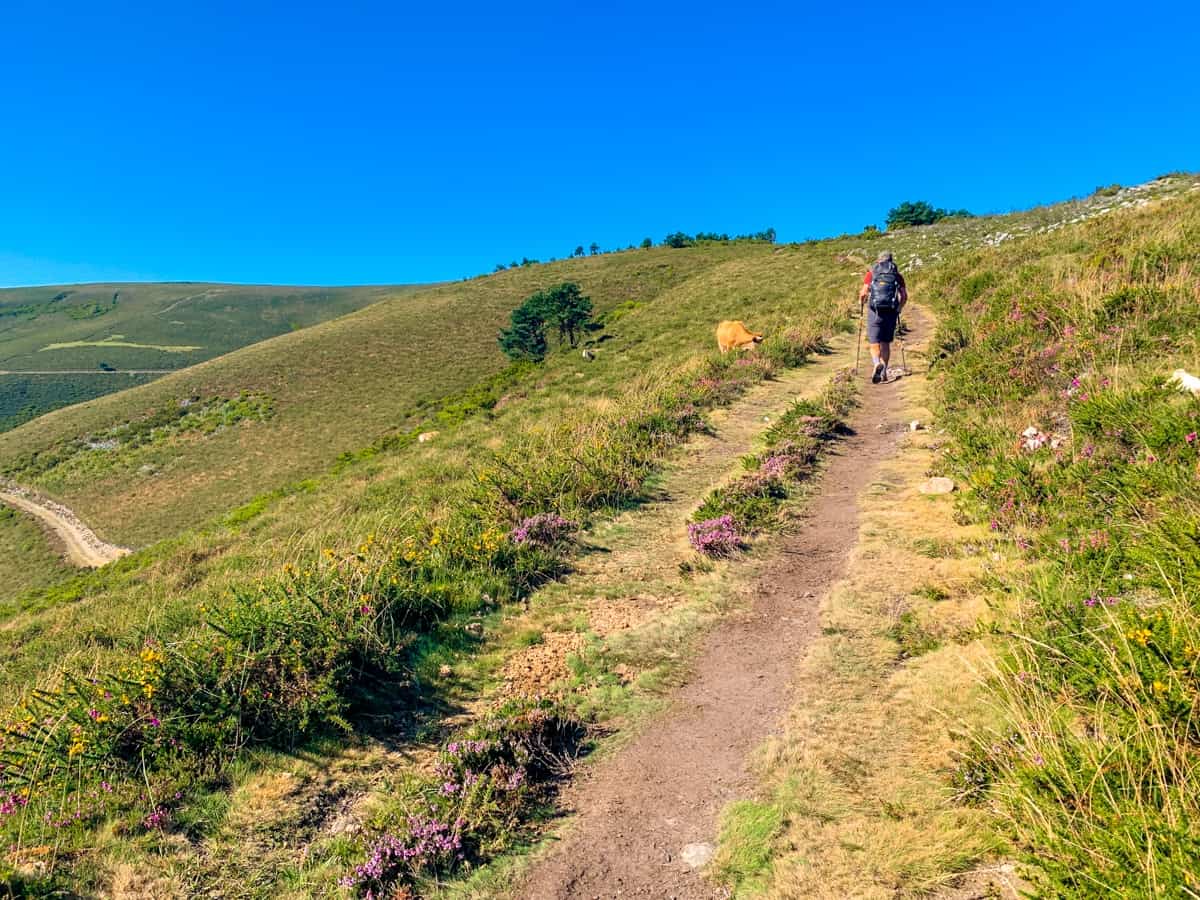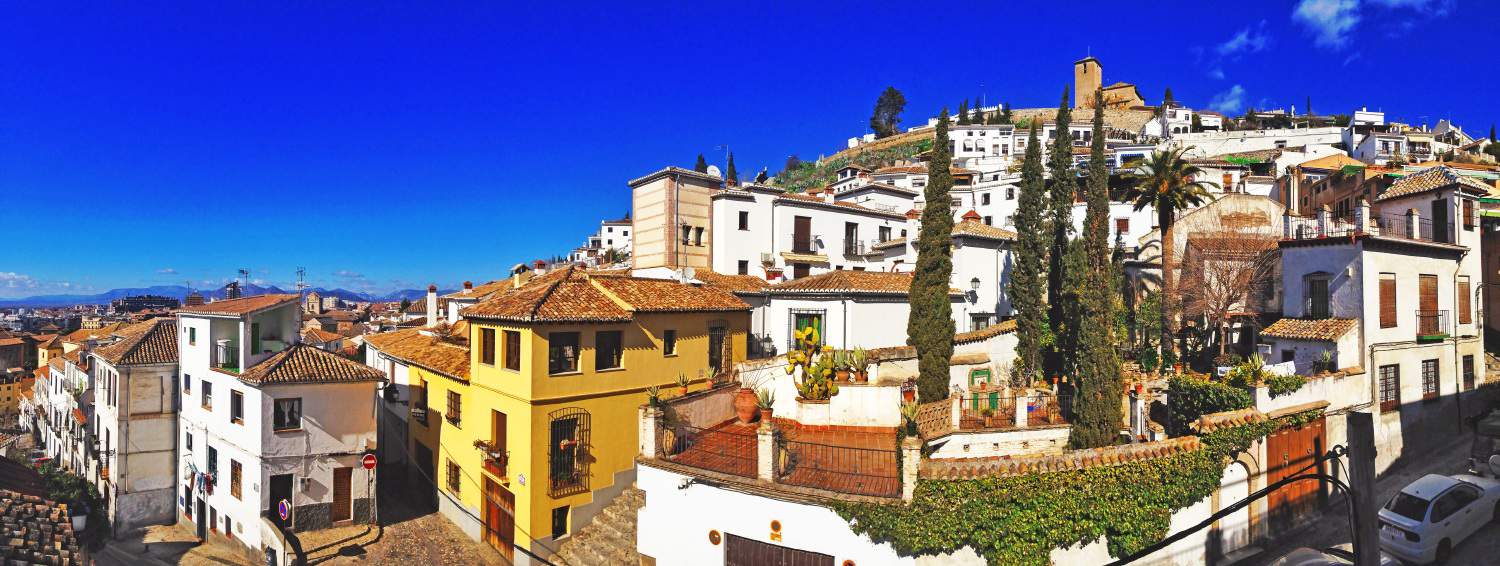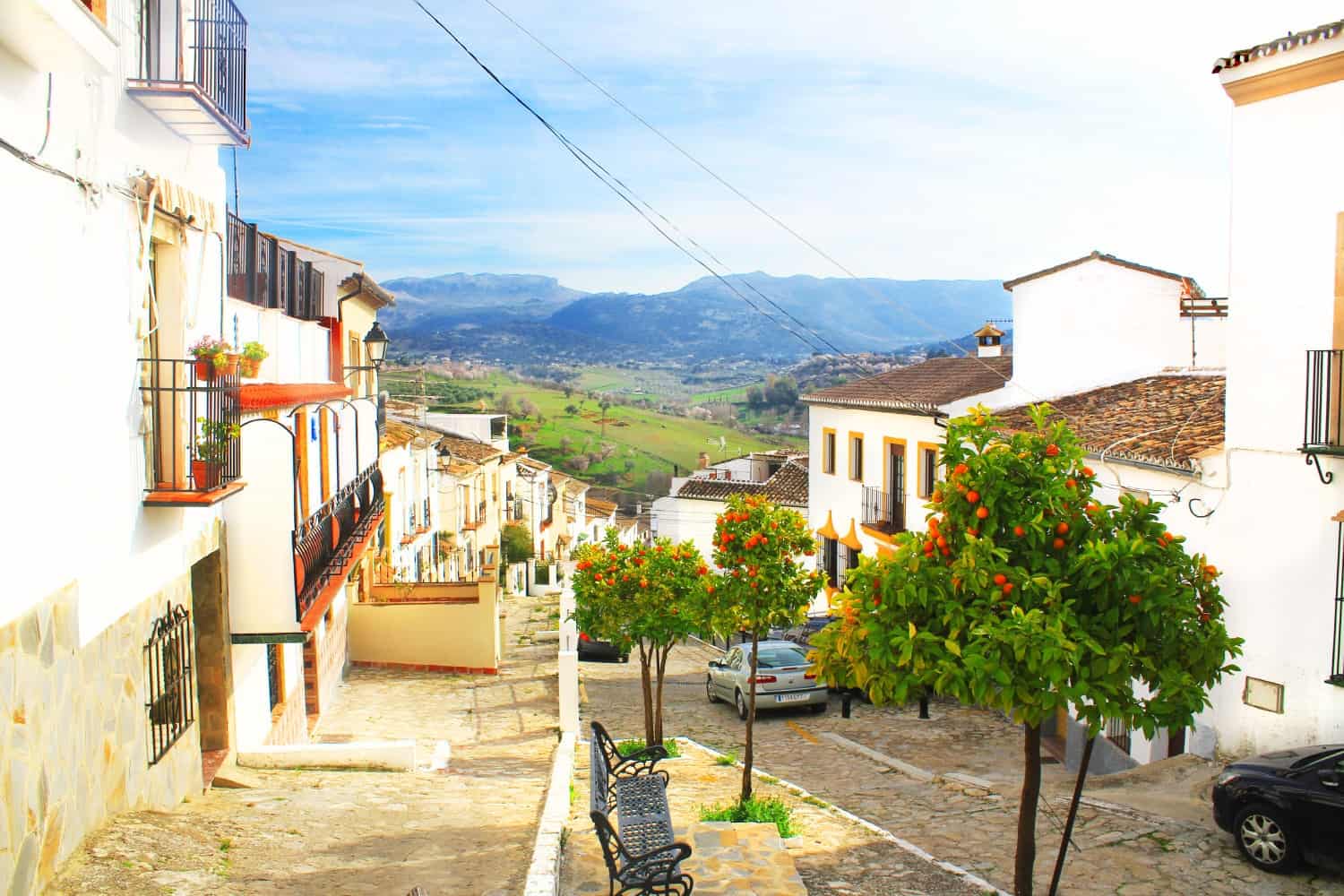I’ve spent so much time travelling across Spain — almost six months in total!
I’ve been lucky enough to spend six weeks exploring Madrid and three months living in Granada. I’ve taken short trips to Valencia, Girona, San Sebastian, Bilbao, and Ronda, visited Barcelona three times, island-hopped in the Canaries and flown to Mallorca five times. I’ve even hiked the Camino de Santiago! I just can’t stop returning to one of my favourite countries in Europe.
Over the time I’ve spent in Spain, I’ve learned an awful lot about how much it costs to travel there — and I’ve kept meticulous track of every single cent I’ve spent, too. While prices have risen since the pandemic, especially in the most popular tourist destinations, I still find it a very affordable place to travel.
Today, I’m excited to share just how much you can expect to spend on travel in Spain, based on my own personal experiences, and how you can get the most bang for your buck euro while you’re there!
Let’s get started.
The Cost of Accommodation in Spain

I know I have a ton of readers who are all about that backpacking life, so I want to kick off this section by running through some of the accommodation options out there for budget travellers.
Couchsurfing is a great way to save money while taking a deep-dive into life in Spain. You’ll stay with a local for free, sleeping on their couch, and learning about their day-to-day life in the country. It’s not the most comfortable of travel experiences, of course, but you’ll learn more about what it’s like to be Spanish than you would by staying in a hostel or hotel. You can browse a list of Spanish Couchsurfing hosts on the Couchsurfing site — with over a million hosts, you’ll find welcoming locals in almost every town and city across the country, many with outstanding reviews.
Housesitting is another good option for saving money in Spain. Housesitting is exactly what it sounds like — you’ll take care of somebody’s house for free while they’re away, usually while looking after their pets. This approach is going to be best for long-term travellers or retirees: you can’t pick and choose dates and destinations, so need to have flexibility over where you go and when. If you do have that freedom, it’s a wonderful way to cut down your travel expenses, soak up some home comforts, look after some adorable animals, and live like a local for a while. Trusted Housesitters is one of the best sites for getting started with housesitting.
And finally, if you’re travelling long-term and don’t mind getting your fingers dirty, you could look at WWOOFing or WorkAway as a way to cut down your costs while working on a farm in exchange for accommodation and food. It’s not the most glamorous travel you’ll ever do, but getting to live for free in a foreign country is an incredible experience, so if you’re backpacking around Europe, this may be the way forward for you.
I’m suspecting, though, that for many of you, you’re not interested in the free accommodation and just want somewhere clean, safe, and affordable to rest your head each night. If that’s the case, there are several options available for you.
The first of these is hostels. In Spain, you’ll come across hostels all over the country, from the big cities to the small villages to beachside hideaways. They’re one of your best options for saving money, and aren’t just for the backpackers.
Hostels in Spain are generally cheaper than equivalents elsewhere in Western Europe, with the big exception being Barcelona over the summer, but even then, it’s still not outrageous. You can expect to spend around €25 for a dorm bed in most spots in Spain, with the price increasing to around €30-40 a night on the beaches and more tourist-filled areas.
When it comes to private rooms in hostels, prices vary a lot. You can expect to spend as little as €45 a night for a clean, basic room in a good location in less-touristy towns, and double that in popular beachside cities in the middle of summer. If you’re travelling with friends or a partner, you may find it cheaper to grab some privacy over settling for two beds in a dorm room.
If you’re an older traveller and put off by the thought of nights spent in hostels, you shouldn’t be! Private rooms are usually very quiet and clean, and most hostels are modern, safe, and centrally located. They tend to have a little more personality than generic hotels, and the staff are fantastic at offering kickass travel advice. As long as you check the reviews of any hostel before booking it to make sure nobody refers to it as a party hostel, you’re all good to make a booking there. I use HostelWorld to find the cheapest hostels.
And, of course, there are always hotels, which give extra comfort and luxury and start at around €100 a night for a simple guesthouse, rising to €150-200 for a three or four-star hotel in a central area, and €250+ for luxury accommodation. I always use Booking to find guesthouses and hotels when I travel, as they have the greatest selection for the best prices. After staying in so many hotels and guesthouses across Spain, these are the places I’d most recommend!
I’ve stayed in several different hotels in Madrid, but my favourite has to be Casa du Soleil (€150). Easily accessible by metro, it’s only a short walk from all the attractions of the city centre in one direction and the vibrant Lavapies neighbourhood in the other, while having thick walls and being on a quiet side street to ensure a good night’s sleep! The rooms are super-modern and stylish, with comfortable beds and large bathrooms (the shower is fantastic!), and there’s a communal kitchen downstairs with free milk and cereal in the morning and tea and coffee all day.
Barcelona is a very popular place to visit, which can make it hard to find good, reasonably-priced accommodation in a central area. One of the few exceptions is Hotel Jazz (€194), which is in a perfect location just a couple of minute’s walk from Plaza Catalunya and the start of La Rambla, the city’s famous walking street. The rooms are clean, modern, and unusually large for Spain, and I love the incredible views over the city from the rooftop pool and terrace area. A tasty buffet breakfast is available each morning, but if you’d rather go out to eat, there are hundreds of good eating options within just a few blocks!
Heading to Seville? This beautiful city is one of the cheaper parts of Spain, and that’s as true for accommodation as anything else. For just €126 a night, Hotel Giralda Center is in an ideal spot, away from the busiest part of the central city but still just a short walk from the city’s biggest attractions. The hotel is basically brand new, and it feels like it: the rooms are huge, with modern touches like a smart speaker so I can play my own music. The staff are super-friendly staff, the breakfast is one of the better ones I’ve come across in a Spanish hotel, and the rooftop pool is very welcome in the summer heat!
I’ve spent more time in Granada than anywhere else in Spain, and can’t get enough of this wonderful southern city! Like Seville and other parts of Andalucía, it’s less expensive than much of the rest of Spain, which makes for some great deals on accommodation. At €109 per night, Hotel Granada Center is a bargain for what you get. It’s close to the train station, a short walk to the old town, and a slightly longer walk to the Alhambra: central Granada is small, so it isn’t far to anywhere you’ll want to go. I really liked the comfortable bed and modern bathroom, and was very surprised by the size of the balcony: it’s huge! There’s a restaurant in the hotel that does good food throughout the day, but like I mentioned earlier, in Granada you get free tapas with a drink: somehow that seems to deal with many of my meals when I’m in town!
The Cost of Transportation in Spain

If you’re going to be hitting up the major cities in Spain, you’re in luck: public transportation is extensive, affordable, and of a high quality. Getting around is easy: if you’re happy to hop on a bus or train, you’ll be able to access pretty much anywhere in the country.
Within the cities themselves, you’ll use buses and metros to get around, as well as taxis. Uber, unfortunately, isn’t in Spain, although you can use the similar Cabify app in several cities across Spain, from Madrid and Barcelona to Seville, Valencia, and more. Madrid also has a fantastic metro, and Barcelona’s is pretty decent. For the rest of the cities, you’ll probably get around by bus, tram, or light rail.
When it comes to train travel between cities, it’s time to get yourself acquainted with RENFE, which runs the train system. You’ll find both high-speed and regular trains across the country, with the former obviously being more expensive. Trains run reasonably on-time, are in good condition, and easy to book online. I’ve travelled by train between several cites, including Barcelona and Valencia, Madrid and Granada, and Granada and Ronda, and enjoyed my rides.
Buses are safe, clean, and comfortable in Spain, and often very cheap. It’s not surprise I find myself regularly using them! ALSA is the main bus company in Spain, and has an English-language version of its website that you can use to search and book tickets.
Whether you’re taking a bus or train, you’ll save money on all but the shortest trips by booking at least a few days in advance versus just showing up at the station.
Spain is quite a large country, so if you’re short on time, it might be worth looking at flights as well. Several airlines, both budget and full-service, operate between many of the cities: I use Skyscanner to search them all at once. I’d only suggest this for extra-long journeys, though: most of the time when I’m going from centre city to centre city, I find it cheaper and just as quick to take the train.
Here’s what I paid for my trips across Spain:
- Bus from Barcelona to Madrid: €9
- Bus from Barcelona to Valencia: €12
- Bus from Bilbao to San Sebastian: €7.50
- Train from Madrid to Granada: €42
- Train from Seville to Madrid: €40
- Train from Barcelona to Valencia: €33
- Train from A Coruña to San Sebastian: €41
- Train from Barcelona to Girona: €13
- Flight from Seville to Barcelona: €50
The Cost of Food in Spain

Spanish food is such a great cuisine! I always forget about it when I think of the great cuisines of the world, but as soon as I touch down in the country, I’m so enamoured by all there is to eat. And let’s not even talk about the jamon iberico — swoon!
If you’re going to be backpacking in Spain, cooking a bunch of meals in your hostel kitchen is a good way to keep your food costs down. Head to a local market or supermarket near to where you’re staying and stock up on ingredients. Here are some typical prices of food and groceries in Spain to help you budget better:
- 0.5l of draught beer: €3
- A bottle of house wine in a small restaurant: €8
- Coffee in an hipster area of town: €2
- Litre of milk: €0.80
- A loaf of bread: €1
- A dozen eggs: €1.50
- 1 kilogram of tomatoes: €1.50
- 1 kilogram of potatoes: €1
- A 1.5l bottle of water: €0.50
The good news is that eating out in Spain doesn’t have to be expensive, so even if you’re on a budget, you’ll still be able to regularly enjoy the local cuisine!
One of my favourite cultural experiences in Spain is eating tapas in Granada. Why? Because they’re completely free. Yep, Granada has this fantastic thing where whenever you order a drink, you get a free plate of food. Order a couple of glasses of wine or a few beers and you won’t need to pay for dinner. If you already plan on drinking with your meals, this is a great way to cut costs and try some local meals.
Some of my favourite alcoholic drinks come from Spain, and I urge you to try them. Clara is beer with lemonade, tinto de verano is red wine with lemonade, and my favourite is kalimotxo, which is red wine and Coca-Cola. I know the last one sounds disgusting, but trust me, trust me, trust me, it’s incredible! If you see it on the menu, you have to order it.
So let’s take a look at some of the best local eats you should try in Spain, along with the typical cost of these meals.
When it comes to breakfasts, continental Europe nearly always frustrates me. I’m not a huge fan of pastries and they do tend to rule in this part of the world. A popular option is chocolate con churros — yes, that’s right. Churros and chocolate for breakfast!
That said, there are other options! One of the more common breakfast dishes is tostada con tomate, aceite, y jamón — bread topped with tomatoes, olive oil, and ham. It’s not the most flavourful of meals, but that doesn’t matter because the food is fresh and it always tastes delicious. You’ll be able to score a potato omelette (tortilla de patatas) in the northern regions of Spain, and you’ll often see a jamón sandwich or roll on the menu as well. As for cost, you’ll be looking at around €5 for breakfast, which usually includes an orange juice or coffee to wash it down.
Let’s talk about lunches next. Bocadillos are everywhere and when the jamón is as good as it is in Spain, you’re probably going to eat a hell of a lot of them. I’ve been offered all kinds of fillings in them, including cheese, tomato, tuna, potato omelette, and of course, cured meats like chorizo and several types of ham. If you’re after something reasonably light for lunch, this is the way to go: you’ll pay around €4-5.
Lunch is typically the largest meal for the locals, though, so if you want to do as they do, prepare yourself for a several courses in the middle of the day. Think cold meats and cheeses to start, followed by a small bowl of soup. Next, you’ll tuck into paella or a fish in lemon sauce, force yourself to eat some roasted pork, then finish it all off with a flan for dessert. Yeah, it’s a lot. Overall, full lunches in Spain range between €20 and €40, depending on how large you want your meal to be and how many glasses of wine you order with it!
Now, if you’re not already aware, the Spanish eat their dinners late. I remember turning up in Granada, forcing myself to wait until 8:30 p.m. before heading out for dinner, and then sitting alone in a restaurant for an hour before the first locals started showing up. Yes, part of the reason why you’ll want to have a huge lunch is because you’ll probably go out for dinner at 9 p.m. at the earliest! When it comes to the type of meals you can expect to eat, some of the more popular dishes are tapas, of course, as well as paella, croquettes, oxtail stew, gambas (shrimp, usually cooked in garlic), salted cod, and Iberian pork. You can expect to spend around €25 – €45 for dinners in Spain.
One way of saving money at dinner and (especially) lunchtime is to look out for smaller, often family-run restaurants offering a menu del dia. These “dishes of the day” typically involve three courses: a starter such as a soup or salad, a main course with chicken, pork, or seafood and rice or potatoes, and a dessert like a flan or ice cream. Water and/or wine is often included, and you’ll usually pay around €15-20 total for a very filling meal.
The Cost of Activities in Spain

We’ve covered accommodation, transportation, and food, but let’s face it: you’re not going to have the trip of a lifetime if you skip out on entrance fees and activities! Here’s a detailed breakdown of some of the entrance fees you’re likely to encounter while travelling around Spain:
- Entrance to Sagrada Familia, Barcelona: €26
- Entrance to Park Guell, Barcelona: €10
- Entrance to the Guggenheim, Bilbao: €15
- Entrance to the Great Mosque, Cordoba: €13
- Entrance to Seville Cathedral: €12
- Entrance to the Alhambra, Granada: €19.09
- Participating in La Tomatina festival: €12
Don’t panic, though! There are plenty of ways to keep your activity costs down while you’re in Spain, and I’ve always had a wonderful time in the country simply walking through the cobblestone streets, lying on the beautiful beaches, and walking in the countryside. There are tons of free museums to enter, whether you’re travelling in Madrid, Barcelona, Valencia, or elsewhere. Confession: I’ve never paid to enter the Sagrada Familia, but I still was awed by the exterior of this iconic building.
One way to save money but still gain a taste of the local culture is to spend a couple of hours wandering around a local market. Spain has some great vintage flea markets to take a look around, and I always find myself drawn to them, even if I’m travelling on a tight budget. I’m a huge fan of El Rastro in Madrid, Alcaiceria flea market in Granada, Mercadillo del Jueves in Seville, and Plaza Redonda Market in Valencia.
I love taking tours to really delve into a country, and these days, I book pretty much every activity I do through Get Your Guide, so I recommend checking them out for inspiration. They have hundreds of activities and tours available across Spain. One of the best tours I’ve taken with them was the three-countries-in-one-day tour (€109), where I got to check out parts of Spain, France, and Andorra, leaving from Barcelona.
These are the highest-reviewed tours you can jump on through Get Your Guide:
- Timed entry ticket for Sagrada Familia in Barcelona: €33.80
- San Sebastian Evening Pintxos Tour with Wine: €116.10
- Flamenco performance in Seville: €25
- Monserrat tour from Barcelona: €85
- Fast-pass ticket for the Alhambra in Granada: €24.59
- Tapas and wine walking tour of Madrid: €80
- Game of Thrones-themed tour of Girona: €35
Don’t Forget Travel Insurance!

Regular readers are already sick of hearing me ramble on about the importance of travel insurance.
Yes, if you’ve read any other posts on Never Ending Footsteps, you’ll know that I’m a great believer in travelling with travel insurance. I’ve seen far too many Go Fund Me campaigns from destitute backpackers that are unexpectedly stranded in a foreign country after a scooter accident/being attacked/breaking a leg with no way of getting home or paying for their healthcare. These costs can quickly land you with a six-figure bill to pay at the end of it.
In short, if you can’t afford travel insurance, you can’t afford to travel.
Travel insurance will cover you if your flight is cancelled and you need to book a new one, if your luggage gets lost and you need to replace your belongings, if you suddenly get struck down by appendicitis and have to be hospitalised, or discover a family member has died and you need to get home immediately. If you fall seriously ill, your insurance will cover the costs to fly you home to receive medical treatment.
I use SafetyWing as my travel insurance provider, and recommend them for trips to Spain. Firstly, they’re one of the few companies out there who will actually cover you if you contract COVID-19. On top of that, they provide worldwide coverage, don’t require you to have a return ticket, and even allow you to buy coverage after you’ve left home. If you’re on a long-term trip, you can pay monthly instead of up-front, and can cancel at any time. Finally, they’re more affordable than the competition, and have a clear, easy-to-understand pricing structure, which is always appreciated.
With SafetyWing, you’ll pay $1.50 a day for travel insurance.
How Much I Spent While Traveling in Spain

As I mentioned at the start of this post, I’ve been tracking every Euro and cent I’ve spent since I started travelling in 2011 and Spain is no different. I’ve taken a look at how much I’ve spent on accommodation, transportation, food, and activities over the six months I’ve spent in Spain and calculated the overall average, which I’ve shared below:
- Accommodation: €145 per day for two people, so €72.50 each
- Transportation: €13.22
- Food: €23.80
- Activities and entrance fees: €12.94
My total daily expenditure in Spain is therefore: €122.50! Not bad at all!
And that’s it for my budget breakdown for Spain! Let me know if you have any questions in the comments below :-)
Related Articles on Travel in Spain
🧳 How to Pack for Spain: My Complete Packing List
🇪🇸 Top Things to Do in Madrid
🥘 28 Incredible Things to Do in Barcelona, Spain
⛰ Exploring Ronda, Spain’s Spectacular Cliffside City
🏰 The Cost of Living in Granada, Spain
Articles on Walking the Camino de Santiago Across Spain
🚶🏼♀️ What’s it Like to Walk the Camino Primitivo?
💶 How Much Does it Cost to Walk the Camino de Santiago?
🎒 What to Take on the Camino Primitivo: My Detailed Packing List
🤔 Reflections on Walking My First Camino








I’ve been living in Barcelona for a few years now and I can definitely say it is a great stop for nomads. The city is fun, there are tons of events for startups and tech people and there is a great coworking ecosystem with some amazing places to work from.
That’s great to hear! I’m thinking of moving to Barcelona later this year.
I’m planning a jaunt to Spain for later this year, hopefully when lockdown ends. I have two weeks and can’t decide whether to go north or south. Budget is a big concern of mine too — which would you suggest?
Thanks Lauren, one of the most complete articles I have seen on the subject. Im sure it will help a lot of people who plan to visit Spain. I will reference the post on my site as well.
Hi! I’m working online now and was thinking of hopping around Spain for a few months. Is there decent public wifi in most places? Do you have ideas about the cost of unlimited data plans as a traveller to use as a hotspot?
(Love your page here – lots of awesome information and I’m feeling more confident about making a trip happen!)
Some really great tips here. I did a 2 week trip around Spain at the end of 2021 and I have to agree, free tapas are the best! I made the most out of my food budget by eating a menu del dia for lunch and free tapas at dinner. Oh, and talking to lots of locals who then fed me :-) Wish I’d done some Coachsurfing though.